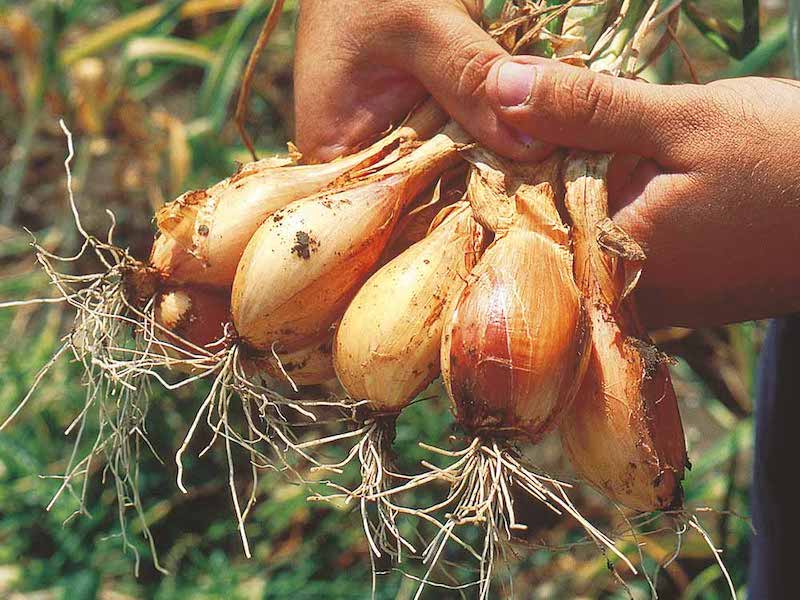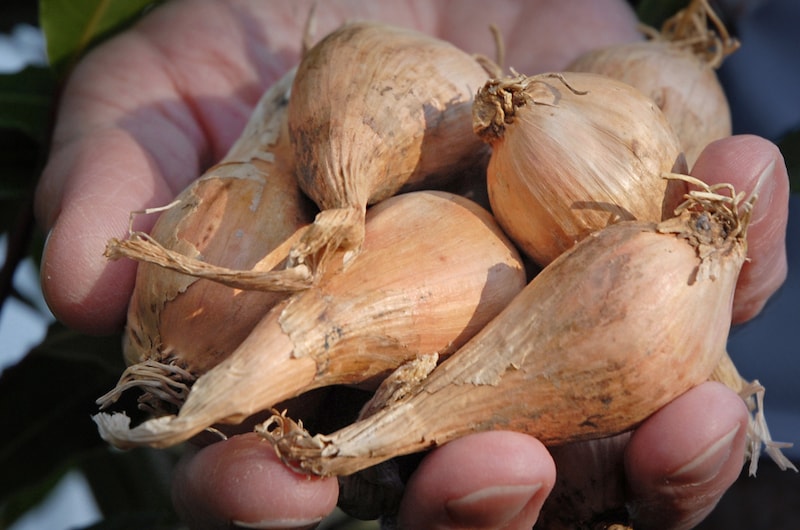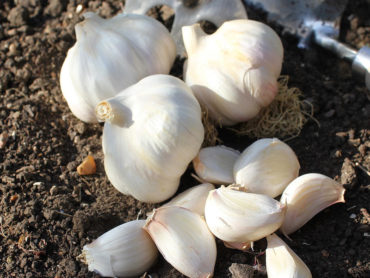Shallots are a sweeter and milder tasting alternative to onions. They’re easy and fun to grow, and thrive in the ground or in pots. Whether you prefer to raise them from seed or plant fuss-free sets, here’s everything you need to know about growing shallots.
When to plant shallots
When to plant your shallots depends on whether you’re growing from sets or from seed. Sets are shallots which have been started the previous season, harvested early, then stored in a dormant state ready to plant out the next year. They’re a convenient way to grow and, because most sets are heat treated during storage, they’re resilient to bolting too. If you’re going for spring-planting shallot sets, plant them out in March and April. There are a few autumn-planting shallot varieties that can go out in October too.
Growing your shallots from seed is more time consuming but very rewarding. You also get a lot of seeds for your money making this a cost effective choice. If growing from seed, start them off indoors during February and March or sow directly into the ground during April and May.
How to plant shallots

Plant shallot ‘Longor’ from October onwards.
Image: Shallot bulbs ‘Longor’ from Suttons
Onions and shallots can be susceptible to pests and diseases so it’s very important to rotate your crop. Avoid planting them in the same patch of soil two or more years in a row. Choose a sheltered spot that gets plenty of sunshine and dig in a generous amount of compost or well-rotted manure. Work the soil until you’ve achieved a fine tilth.
If you’re planting sets, all you need to do is pop them into the soil at 25cm (10”) intervals, leaving 40cm (16”) between rows. Plant carefully with the roots facing down to a depth which leaves just the tip of the set exposed. Firm gently to avoid damaging the roots and water using a fine rosette.
If you’re growing from seed, sow indoors at a temperature of 15-20ºC (60-68ºF). Grow on the resulting seedlings in trays, planting outdoors during May and June. Space the plants 7.5cm (3″) apart in the row and 30cm (12″) between rows. Alternatively, sow seeds directly outside between March and May into finely raked, firmed soil at a depth of 1cm (½″).
How to care for shallots

‘Golden Gourmet’ shallots grow into large round bulbs
Image: Shallot bulbs ‘Golden Gourmet’ from Suttons
When sowing during the spring, take care to protect your young plants from the ravages of frost. Covering them with horticultural fleece during cold spells will do the trick.
You should also stay on top of your weeding – your shallots will crop better if they don’t have to compete with other plants for sunshine and nutrients. Like onions, shallots have shallow roots which are easily disturbed by hoeing, so it’s best to weed them by hand.
Make sure you water your shallots regularly during the growing season. Keeping the soil moist gives the growing plants plenty to drink and when it’s sunny, evaporation helps to keep the foliage cool. This is important because any stress caused by heat and drought may cause your crop to bolt. Stop watering after the first week of July. This encourages the shallots to ripen and helps to dry the foliage ready for harvest.
When to harvest shallots

‘Jermor’ shallots harvested on a sunny day
Image: Shallot bulbs ‘Jermor’ from Suttons
Shallots grow in direct relation to the amount of sunlight they receive. You’ll know they’re ready when the foliage yellows and begins to topple over. Some gardeners hasten this process by knocking down the stems, but it’s best to wait until the plant does it naturally otherwise there’s a risk that rot can set in.
You can harvest shallots as soon as they’re ready and use them right away, but you’ll probably also want to store the bulk of your harvest for use throughout the year. With this in mind, check the weather forecast and only dig up your shallots when you know you have a couple of good dry days ahead.
Dig your crop, being careful not to damage the bulbs, separate the clumps and lay them on the ground to dry in the sun. You want the skin to grow crisp and papery ready for storage.
How to store shallots
Shallots store beautifully, lasting for up to a year if processed correctly. To do this, simply make sure that your produce is well dried. If the weather is bad, bring your shallots into the shed or other indoor space where there’s plenty of air flow and make sure the bulbs are thoroughly dry before you put them away.
To store, either plait the stems and hang them as you would onions or cut most (but not all) the foliage away and store them in racks. Check regularly for rot and throw away any affected bulbs immediately.
Best varieties of shallots

‘Griselle’ is a bold flavoured, spicy shallot
Image: Shallot bulbs ‘Griselle’ from Suttons
There are many lovely varieties of shallots to choose from so try a few different kinds to see what grows best on your patch. Some of our favourites include:
- Shallot Banana Seed – Zebrune – popular with TV chefs, this seed-grown variety is quick and easy to peel and retains its taste well during cooking.
- Jermor – the shallot that’s grown in the heart of Brittany’s shallot zone, Jemor is a delight you can’t afford to miss out on. Slightly elongated with an attractive copper skin, not only does this shallot taste delicious, its pink-tinged flesh looks attractive too.
- Griselle – if you like your shallots bold flavoured and spicy, this is the one for you. It’s an autumn planting set that produces silver skinned produce in June. Stores well into the winter.
- Red Sun – these spring planting shallots have a distinctive spicy flavour, and are perfect for cooking, pickling and using in salads.
- Golden Gourmet – another heavy cropping round shallot, this one has a great taste and is very easy to grow making it a favourite for beginners.
Shallots offer a sweeter, milder taste experience than onions, and are a lovely addition to any garden or allotment. We hope you’ll give them a try!
Lead image: Shallot Banana Seed – Zebrune from Suttons
Last Updated on September 10, 2025 by Suttons Horticultural Team





What is the best soil for growing shallots in pots?
What is the best soil mix for growing shallots in pots?